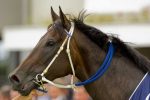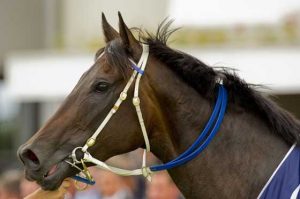Australasian racing this weekend did not just give us memorable Group One victories by the champion fillies/racemares Black Caviar, More Joyous and Atlantic Jewel, but it also provided an interesting reminder that good families keep coming up with good horses.
The NZ-bred filly Richebourg, a daughter of the Darley Arabian-line NZ 2,000 Guineas winner Vice Regal, raced with great success in Melbourne in the early ’80s, winning good races at Caulfield, Flemington and Moonee Valley. Coming from a family which has subsequently produced the Group One winners Stony Bay and Zamoff, she was clearly an attractive prospective broodmare. Time has now told just how good she was in this role.
Richebourg’s best produce was Romanee Conti, a daughter of Sir Tristram who posted umpteen high-class performances, headlined by wins in the Queen Of The Turf Stakes in Sydney and the Hong Kong Cup at Sha Tin. In time Romanee Conti bred an even greater racemare: Ethereal, winner of four Group One races including the Melbourne and Caulfield Cups. Ethereal too has now proved herself a good broodmare, her offspring including the NZ Derby placegetter Uberalles (by Giant’s Causeway) and the NZ 1,000 Guineas place-getter Velvet and Satin (by Carnegie).
Richebourg’s second best daughter was Grand Echezeaux, a daugther of Sir Tristram’s son Zabeel. This filly won the Group One Australasian Oaks before breeding one of Danehill’s best sons: Darci Brahma, a Group One winner at two, three and four, and now a successful stallion at The Oaks Stud in New Zealand.
Grand Echezeaux’s current three-year-old is Burgundy, a son of Danehill’s champion son Redoute’s Choice. On Saturday Burgundy recorded his third stakes victory of the season by taking the Group Three Cambridge Breeders’ Stakes at Te Rapa racecourse in Hamilton. Remarkably, the other feature race on the card, the Group Two Dulcie Stakes, was won by the four-year-old Redoute’s Choice filly Dolmabache, whose dam Our Echezeaux is a full-sister to Grand Echezeaux.
Bearing in mind that these two races were won by two such closely related horses, it was appropriate that the feature race was named after Dulcie, one of the greatest broodmares in the history of New Zealand breeding. An unraced daughter of the imported Italian stallion Duccio, Dulcie bred five high-class horses by Le Filou (Fulmen, Fileur, Gay Filou, Micheline and Mia Bella) before foaling a colt by Trictrac in 1972. That colt was Balmerino, whose second place behind Alleged in the 1977 Prix de l’Arc de Triomphe remains the best run by any antipodean-bred horse in Europe’s greatest weight-for-age race.



